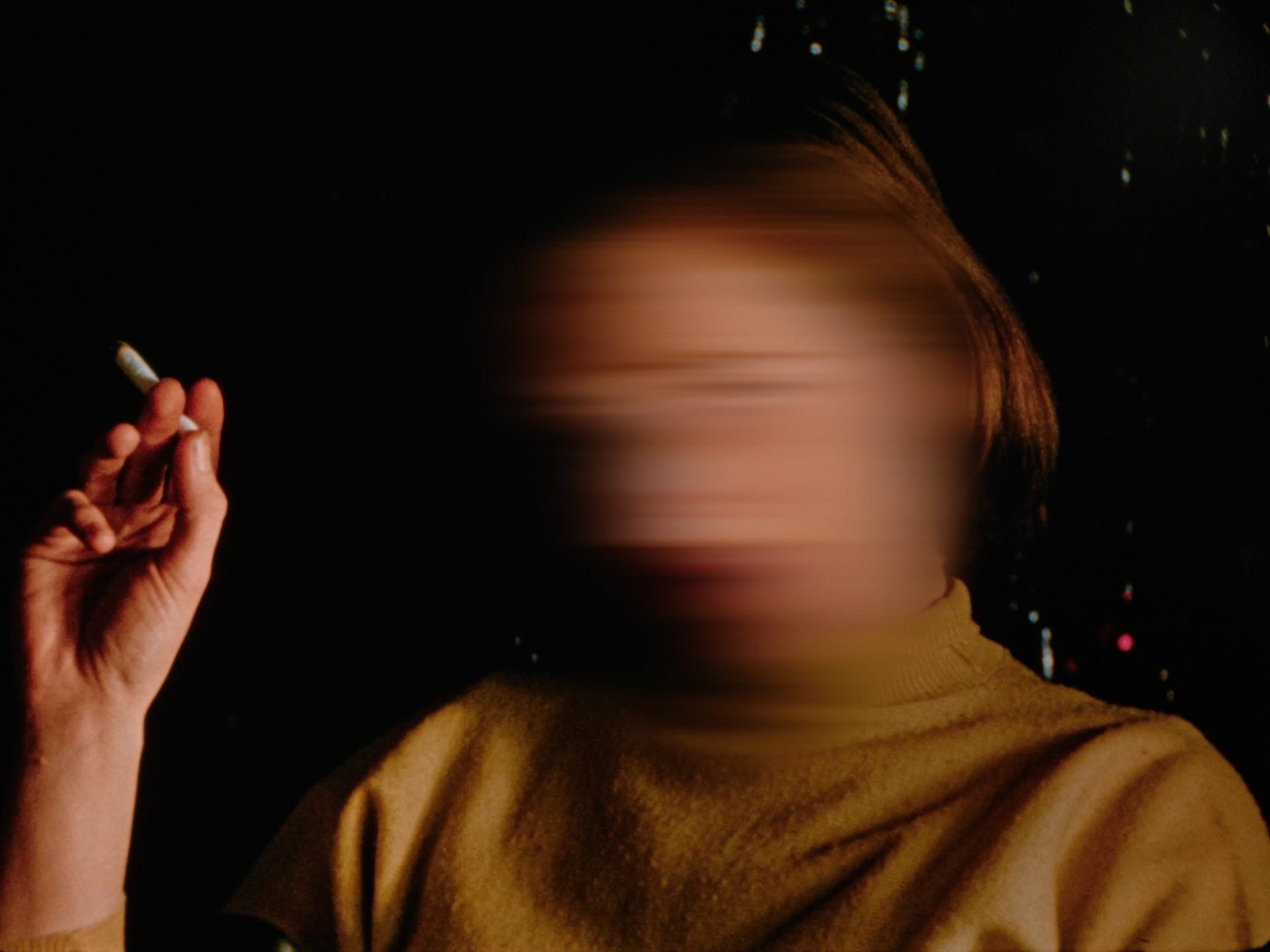Memorable images, moments, qualities, techniques and scenes from the Forum Expanded strand at the 2022 Berlinale.
Home When You Return (Carl Elsaesser, 2021) © Carl Elsaesser
When Daniel Kasman covered the Locarno Festival on Notebook in 2017 he hit upon a great way of engaging with standout work. In his introduction, he explained that he would be “looking for specific images, moments, techniques, qualities or scenes…that grabbed me and have lingered past and beyond the next movie seen, whose characters, story and images have already begun to overwrite those that came just before.” This seemed like a great way to engage with the creative work in a milieu like a festival - to concentrate on that which lingers rather than attempting to highlight everything. As such, we’ve shamelessly pilfered this very technique for the ALT/KINO festival reports.
On this occasion, Patrick Gamble went in search of memorable moments and motifs from the ever-fascinating selection of experimental work included in the Forum Expanded programme at the Berlinale.
Home When You Return (Carl Elsaesser, 2021) © Carl Elsaesser
Mourning the disappearance of furniture in Carl Elsaesser’s Home When You Return
The sound of Joan Thurber Baldwin’s 1950’s melodrama A Change of Scene echoes through the wood-panelled corridors of Carl Elsaesser’s grandmother’s house in his latest film about the psychogeographies of mourning. Now vacated and put up for sale, his camera prowls these empty rooms in search of any memories that might remain, but all he finds are the marks left in the carpet where furniture once stood. Elsaesser observes these indentations with a forensic eye. They are momentary memories, materialised through loss, but they capture the strange silence that exists before a house becomes a home. A eulogy for the forgotten lives of those trapped in the gilded cage of suburban domesticity, Home When You Return poetically embodies a set of ideas (and anxieties) about grief, temporality, and the concealed lives of women.
Moune Ô (Maxime Jean-Baptiste, 2022) © Maxime Jean-Baptiste
The camera as a weapon of imperialism in Maxime Jean-Baptiste’s Moune Ô
In Moune Ô, Maxime Jean-Baptiste deploys his own family history as a lens through which to deconstruct the global function of cinema as a tool for colonial continuity. Using archive footage of the Paris premiere of Alain Maline’s Jean Galmot, Aventurier, he demonstrates how representation alone isn’t enough to force society to think differently about the legacy of imperialism. The footage, in which the director’s father can be seen celebrating the film’s release with other Guyanese actors who appeared as extras, is slowed down and re-played multiple times. At first these scenes seem celebratory as we watch his father playing a drum amongst the crowd on the Champs Elysées - but with each replay something unsettling begins to emerge as he repeatedly performs to this crowd of cheering white faces. When we speak of ‘shooting’ with a camera, we rarely acknowledge the kinship between cinema and colonialism. Here, Jean-Baptiste is using his anger towards this staging of Black bodies for white audiences to draw attention to the role cinema has played in reinforcing colonial stereotypes and ideologies in Western Culture.
O dente do dragão (Rafael Castanheira Parrode, 2022) © Rafael Castanheira Parrode
The use of chemical augmentation to make the invisible visible in Rafael Castanheira Parrode’s O dente do dragão
In 1987, in the planned city of Goiânia, Brazil, one of the worst nuclear accidents ever occurred when a group of scavengers accidentally released dangerous levels of radiation while dismantling an abandoned piece of hospital machinery. Four people died and countless others were left with radiation poisoning, yet this catastrophe remains relatively unknown. One of the most terrifying things about a nuclear disaster like this is its invisibility and Parrode applies chemical treatments to rephotographed footage - from a documentary about the incident and promotional videos enticing people to move to Goiânia - to visualise how radiation disassembles atoms and causes DNA damage in human cells. As these images decay and decompose in front of our eyes, we are forced to consider this landscape and how the violent expansion of planned cities like Goiânia represents a collective amnesia in Brazil that allows for the erasure of traumas like this to occur.
One Big Bag (Every Ocean Hughes, 2021) © Every Ocean Hughes
The importance of a well stocked mobile corpse kit in Every Ocean Hughes’ One Big Bag
The pandemic has forced all of us to reconsider our relationship to death, but the candour of One Big Bag’s millennial death doula (played by Brooklyn-based actor Lindsay Rico) might still take some people by surprise. Opening up conversations about mortality, grief, and topics surrounding death that can often be taboo, she speaks straighforwardly about the need for good quality glue, tampons for those leak-prone openings, and the importance of knowing your ice technologies. Selected with an almost fetishistic fastidiousness, these items are all hung from the ceiling by ropes as Rico weaves her way through them, explaining their uses while occasionally stopping to discuss the wider social and racial inequalities of the death industry. The tension created between the stillness of death and her dynamic performance - a mix of intense percussive dance and deadpan delivery - borders on the surreal, with Hughes suggesting that the act of dying is fundamentally inexpressible through language and can only really be understood through the senses.
Parasite Family (Prapat Jiwarangsan, 2021) © Prapat Jiwarangsan
Digital democracy in Prapat Jiwarangsan’s Parasite Family
Commissioning and disseminating portraits has long been a practice in which those in power have openly (but carefully) chosen how to represent themselves. Even today, the relationship between portraits and authority can be seen in the photographic images of our state leaders, or on the money we carry in our pockets. In Parasite Family Prapat Jiwarangsan uses A.I. and digital manipulation techniques to animate and alter the negatives of photos taken of political figures and aristocratic families in Thailand to create a space for reflection on the relationship between image and power. Defacing a portrait can be seen as an act of resistance or dismissed as vandalism, but by morphing and disfiguring these images Jiwarangsan has created a celebration of digital photography and an example of how technology can be used to democratise the art of portraiture.
VS (Lydia Nsiah, 2021) © Lydia Nsiah
The all seeing eye of big data in Lydia Nsiah’s VS
Revelling in our modern anxieties about the internet, Lydia Nsiah’s “virtual spiral” considers the psychological implications of the data gold-rush. A kaleidoscopic assault of 16mm footage of server farms and data centres transformed by a spiralling camera designed and operated by Nsiah, these geometric images hit the viewer at a prodigious rate, creating a disorienting effect that feels febrile and vaguely belligerent. We happily upload our photos and life updates to social media, oblivious to how everything we do online is recorded, collated, and commodified, but how would we feel if we could see the internet staring back at us? The screen quivers in a blur of coalescing lines and, just as you begin to realise your participation might be feeding this machine it’s too late; you’re already in its sights!
White Sands Crystal Foxes (Liz Rosenfeld, 2021) © Liz Rosenfeld
The mind-boggling possibilities of fulldome technology in Liz Rosenfeld’s White Sands Crystal Foxes
After a live performance of her text ‘The Shimmer’, performance artist Liz Rosenfeld projected her latest film on the concave ceiling of Berlin’s Zeiss Major Planetarium. Known for her boundary pushing approach to depicting contemporary queer experiences, her experimental short asks questions regarding sexuality in the face of inevitable and irreversible climate change. Combining the immersion of VR with the shared experience of going to the cinema, the audience was taken on an interplanetary voyage to the Trinity Site where the world's first nuclear device was exploded and ushered in a dystopian future where polyamorous foxes are the only species left on the planet. With her first foray into 360 degree filmmaking, Rosenfeld has provided us with a theoretical framework and new cinematic language through which we can approach the climate crisis in a new, and potentially more effective, way.
The 2022 edition of the Berlinale ran from 10-20 February 2022
Patrick Gamble is a writer on film and culture, whose work has featured on Hyperallergic, BFI, Calvert Journal and Kinoscope. Further links to his writing can be found at patrickgamble.contently.com.








